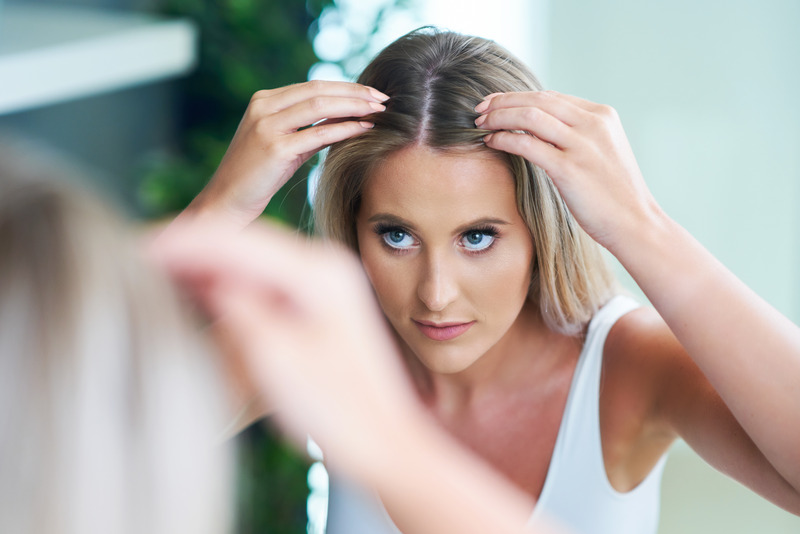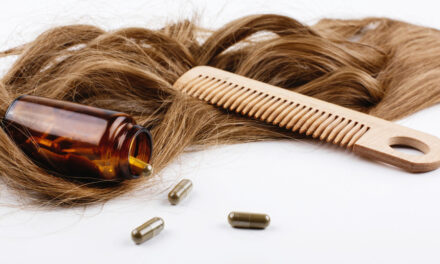
Have you ever wondered how long it takes for your hair to grow back after a haircut, hair loss, or even hair removal treatments? Understanding the timeline of hair regrowth is crucial, not just for those curious after a new haircut but especially for individuals experiencing hair loss or recently undergoing hair removal.
This curiosity often stems from the desire to either return to a previous look or to recover from hair thinning and loss. In this blog post, we’ll dive deep into the hair growth process, the factors affecting it, and what you can realistically expect when waiting for your hair to grow back.
Understanding Hair Growth
Hair growth is not a continuous journey but a cyclical process consisting of three key phases: Anagen (growth phase), Catagen (transition phase), and Telogen (resting phase). During the Anagen phase, which can last anywhere from 2 to 7 years, your hair is actively growing.
Then, it transitions into the Catagen phase, a short period of about 2 to 3 weeks, where growth stops and the hair follicle shrinks. Lastly, the Telogen phase, lasting about three months, is when the hair rests before it eventually falls out.
Understanding these phases is essential to comprehending hair growth timelines.
Factors Affecting Hair Growth
Hair growth is not just a matter of genetics but is influenced by various factors, including age, health, nutrition, and hormonal balance. These elements interact in complex ways to determine the rate and quality of hair growth, making each person’s hair growth journey unique.
Recognizing these influences can guide individuals in optimizing their hair’s health and managing expectations about hair growth rates.
- Genetics lays the groundwork for your hair’s growth potential and plays a significant role in conditions like male pattern baldness, influencing the rate, thickness, and health of your hair.
- Age is a determining factor, with younger individuals typically enjoying faster hair growth. This dynamic shifts as one age, often leading to increased hair fall and slower growth rates.
- Overall, Health and Nutrition serve as the foundation of healthy hair growth. A lack of essential vitamins and minerals can severely impact hair growth, making it imperative to maintain a balanced diet to stimulate hair follicles effectively.
- Hormonal Balance significantly affects hair growth, with fluctuations potentially altering growth patterns.
- Environmental and Lifestyle Factors also impact hair health, emphasizing the importance of a holistic approach to hair care.
Average Hair Growth Rates
Hair growth rates are essential for many, influenced by various factors, including hair type, age, and gender. These rates are not uniform across different hair types or demographics, leading to diverse growth patterns observed among individuals.
Scalp hair typically grows at a standard rate, but facial and body hair can exhibit varying growth speeds. Furthermore, age and gender play significant roles in determining how quickly hair grows, reflecting the complex interplay of biological and hormonal factors.
Understanding these differences can provide insight into what to expect from hair growth under various circumstances.
- By Hair Type: Scalp hair usually grows about half an inch per month, but facial and body hair growth rates are more variable.
- By Age: Younger individuals, including children and teenagers, often experience faster hair growth, which tends to slow with age due to hormonal changes.
- By Gender: On average, men might experience slightly faster hair growth rates than women, attributed to differences in hormones and their effects on the active growth phase. However, this can vary widely among individuals, with each person’s hair growth influenced by their unique genetic and hormonal makeup.
How Long Does It Take for Hair to Grow Back?

The rate and pattern of hair regrowth can vary significantly based on several factors, including the method by which the hair was removed or lost, the health of the individual, and underlying biological mechanisms. Here’s an expanded explanation for each scenario:
After a Haircut
Hair growth after a haircut follows a natural cycle and is influenced by various factors, leading to variations in the rate and health of new hair growth. On average, hair grows about half an inch per month, but this rate can differ widely from person to person due to biological and environmental influences.
Understanding these factors can help manage expectations regarding hair length over time and optimize hair health.
Key Points on Hair Growth After a Haircut
- Average Growth Rate: Hair typically grows at an average rate of about half an inch per month. This is a general estimate, and actual growth rates can vary.
- Genetic Factors: Genetic predispositions play a significant role in determining the speed of hair growth. Some people may naturally experience faster or slower hair growth due to genetic makeup.
- Health and Age: An individual’s overall health and age can impact hair growth. Younger individuals and those in good health may notice quicker hair growth than older adults or those with health issues.
- Scalp Health: A healthy scalp is crucial for optimal hair growth. Conditions affecting the scalp, such as dandruff, psoriasis, or fungal infections, can impede hair growth.
- Hormonal Balance: The influence of hormones on hair growth is significant. Hormonal imbalances, such as those occurring during pregnancy, menopause, or endocrine disorders, can alter the rate and pattern of hair growth, sometimes leading to hereditary hair loss or changes in hair texture and density.
- Nutritional Status: Adequate nutrition is essential for sustaining hair health. Deficiencies in critical vitamins and minerals, including iron, vitamin D, and zinc, can result in hair growth slows or even hair loss. Thus, maintaining a balanced diet is crucial for supporting healthy hair growth.
- Environmental Factors: External factors, including stress, weather conditions, and exposure to chemicals or styling products, can also influence hair growth rates.
After Hair Loss
Hair loss can occur for various reasons, from genetic factors to autoimmune conditions and environmental stresses. Hair regrowth after experiencing hair loss is complex and can differ significantly based on the underlying cause.
Treatments are available for many types of hair loss, but their effectiveness and the time required for hair to regrow can vary widely among individuals. Understanding hair loss’s causes and potential treatments is crucial for managing expectations and seeking appropriate care.
Key Points on Hair Regrowth After Hair Loss
Pattern Hair Loss (Androgenetic Alopecia):
- Affects both men and women with a distinctive pattern of hair thinning.
- Treatment options include medications like minoxidil or finasteride and, in some cases, hair transplant surgery.
- The effectiveness of treatment varies, making this a potentially long-term condition to manage.
- In cases where treatments do not yield the desired regrowth, it may be due to dead hair follicles that no longer produce hair.
Alopecia Areata:
- An autoimmune disorder where the immune system attacks hair follicles, causing hair to fall out in patches.
- Recovery times are highly unpredictable, ranging from months to years.
- Options like corticosteroids and immunotherapy offer hope, though their effectiveness can widely vary among individuals, highlighting the unpredictable nature of alopecia areata recovery.
Scalp Psoriasis, Hormonal Changes, Stress, Thyroid Problems, and Nutritional Deficiencies:
- These diverse factors uniquely affect hair health and growth, potentially leading to hair falls.
- Managing underlying conditions, such as treating scalp psoriasis, correcting hormonal imbalances, addressing thyroid issues, and ensuring a nutritionally balanced diet, can significantly influence hair regrowth.
- Stress reduction techniques and lifestyle changes may also play a role in improving hair growth.
After Waxing or Shaving
Hair removal through waxing or shaving is standard for cosmetic and personal hygiene reasons. Hair regrowth after such methods can be noticeable, with changes in texture and appearance initially observed.
Understanding the process of hair regrowth following waxing or shaving can help set realistic expectations for the feel and look of hair as it grows back.
Key Points on Hair Regrowth After Waxing or Shaving
Immediate Regrowth:
- Hair starts to regrow right after waxing or shaving, with no delay in the hair growth cycle.
- The initial regrowth may feel stubbly or coarser. This is because the hair cut or removed near the skin’s surface has a blunt tip, contrasting with uncut hair’s naturally pleasing, tapered tip.
Regrowth Appearance:
- The hair gradually returns to its original texture and appearance as it grows.
- The coarse feeling associated with new hair growth after shaving is temporary. Hair does not become thicker or darker from shaving or waxing; this is a common misconception.
- Waxing may make hair feel finer over time if the hair follicle weakens after repeated treatments, leading to less dense hair regrowth.
Texture Differences:
- The perceived difference in hair texture after shaving versus waxing can be attributed to the hair removal method. Waxing removes the hair from the root, allowing new hair to grow with a tapered end, which might feel softer compared to the blunt-tipped hair that grows after shaving.
After Chemo
Chemotherapy is a powerful treatment used to combat cancer, but it comes with a range of side effects, including hair loss. This is because chemotherapy targets rapidly dividing cells, a characteristic of cancer cells, but unfortunately, it also affects healthy cells like those in hair follicles.
Understanding the timeline for hair regrowth after chemotherapy and the changes that may occur can help individuals prepare for the recovery process and manage their expectations.
Key Points on Hair Regrowth After Chemotherapy
Regrowth Timeline:
- Hair loss from chemotherapy is usually temporary. Hair typically begins to regrow 1-3 months after treatment, although the exact timeline can vary based on the individual and the specific drugs used.
- Seeing the initial signs of regrowth can be encouraging as a tangible indicator of the body’s recovery and its efforts to promote hair growth.
Changes in Hair:
- Upon regrowth, individuals may notice their hair exhibits a different texture, color, or curl pattern than before treatment. Instances of thinning hair may also occur, alongside changes such as hair returning curly when it is straight, or vice versa.
- These changes are often temporary. As the hair grows and the body recovers from the effects of chemotherapy, it may gradually return to its pre-treatment state or settle into a new normal.
Temporary Nature of Changes:
- Individuals must understand that the initial changes in hair characteristics post-chemotherapy are usually not permanent. Patience is required, as hair can take several months to a year to fully regain its original properties or stabilize in its new form.
Emotional and Psychological Impact:
- Losing hair and experiencing its regrowth with potentially different characteristics can have a significant emotional and psychological impact. Support from friends, family, and healthcare professionals is crucial.
- Some individuals may use wigs, hats, or scarves until they are comfortable with their hair’s appearance, while others may embrace the changes as a sign of their strength and recovery.
Myths vs. Facts

There are many misconceptions surrounding hair care and growth, with myths often perpetuated despite scientific evidence to the contrary. One such myth is the belief that cutting hair can accelerate growth.
However, hair growth is determined by activity at the follicle level beneath the skin, and since cutting hair affects only the length of the hair shaft above the skin, it has no impact on the rate at which hair grows. Similarly, another common myth is that shaving causes hair to grow thicker.
This misconception likely stems from the blunt tips of newly shaved hair feeling coarser or thicker to the touch as it regrows, which can be mistaken for an increase in hair density or thickness. However, shaving does not alter the number of hair follicles on the skin or affect hair’s natural growth cycle.
These myths overlook the biological realities of hair growth, determined mainly by genetics, health, and hormonal factors rather than by cutting or shaving the hair.
Bottom Line
Understanding hair growth and regrowth timelines is crucial for setting realistic expectations. While genetics, age, and health play significant roles, patience and consistent care are vital in promoting healthy hair growth.
If you’re looking for an extra boost, consider Vitamins Revive for healthy hair growth, designed to support your hair’s natural growth cycle. Remember, every hair journey is unique, and embracing your hair’s natural process is part of the journey toward healthier, stronger hair.
FAQs
How long does hair take to grow back after cutting it?
Hair typically grows back at a rate of about 6 inches per year, so the time it takes to grow back after cutting depends on the length you’re aiming for.
How long does it take to regrow lost hair?
The time it takes to regrow lost hair varies widely depending on the cause of hair loss. It can range from a few weeks to several months, or in cases of permanent hair loss conditions, regrowth may not be possible.
How do you make hair grow back faster?
Improving nutrition, reducing stress, and avoiding harsh hair treatments can support growth. Additionally, treatments like minoxidil (Rogaine) and finasteride (Propecia) may help in some cases, but consulting with a healthcare professional for personalized adviceis essential.










